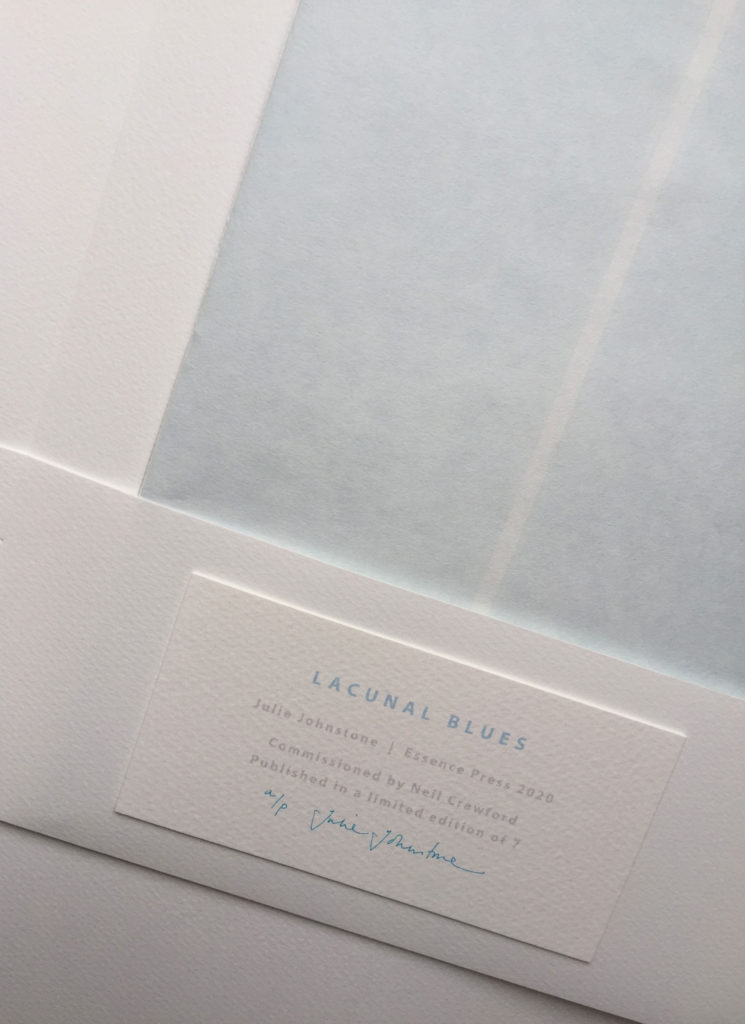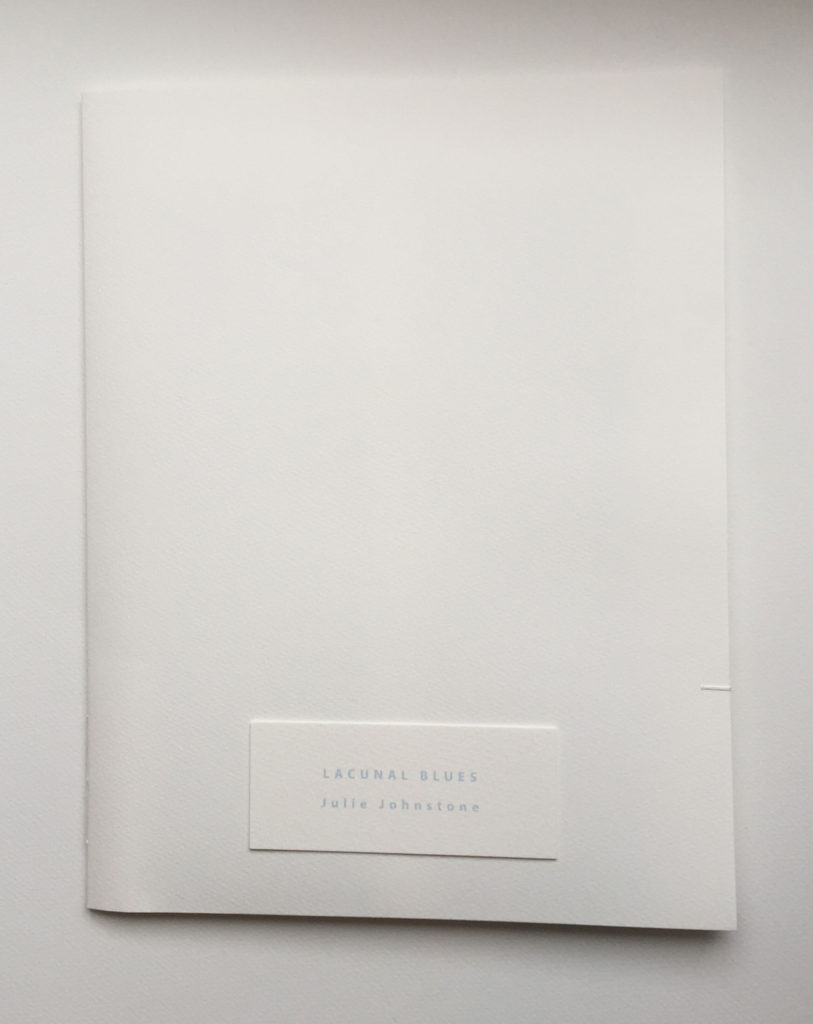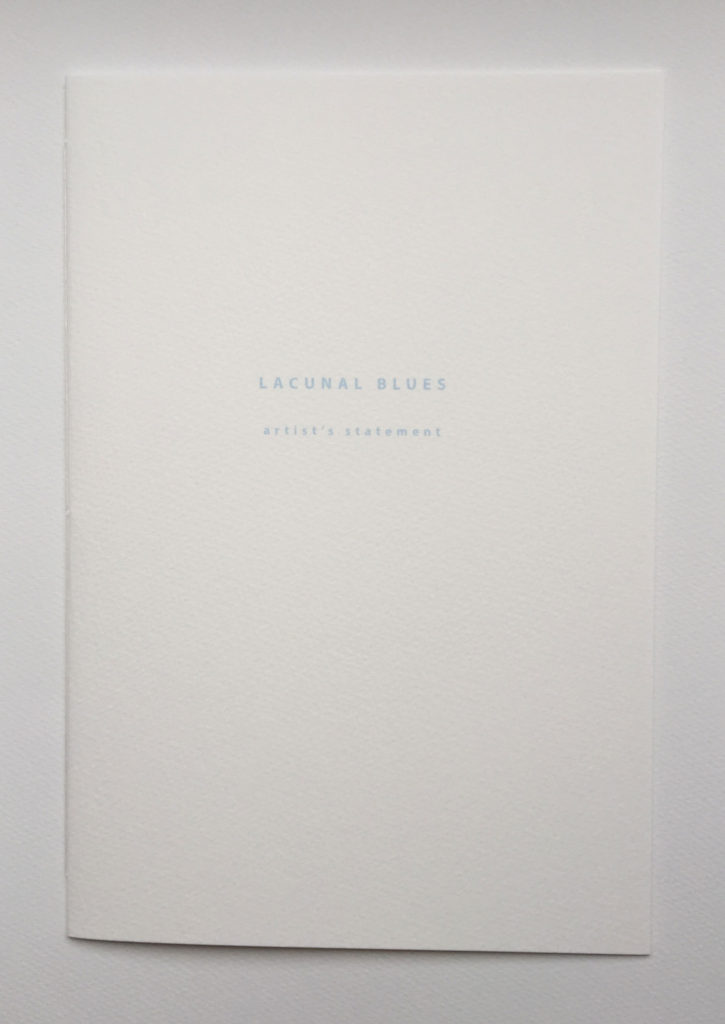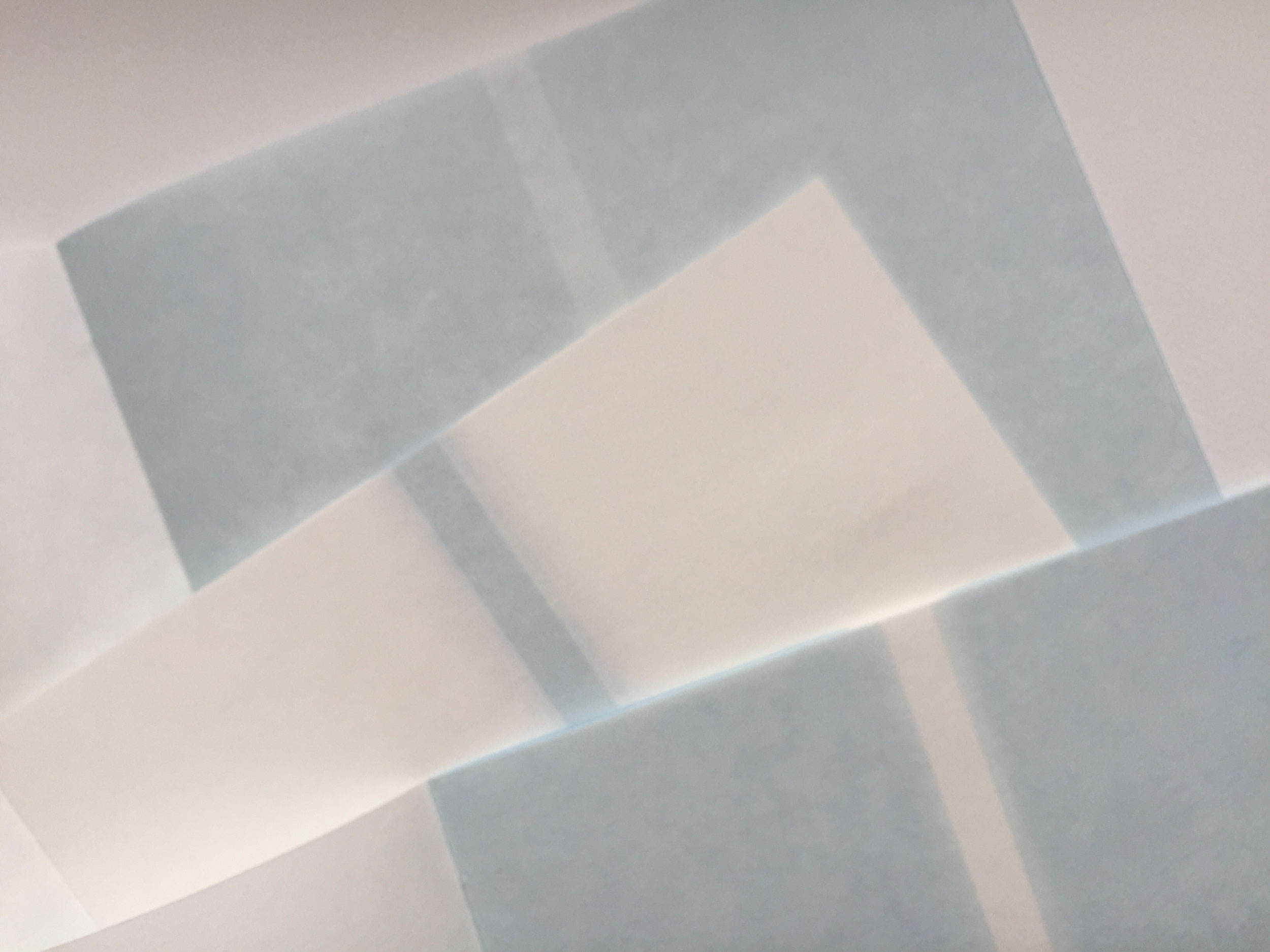
lacunal blues
Triptych, three books | each book h280mm x w190mm | printed inkjet on six facing pages (including the cover page) on 80gsm Hahnemühle Sumi-e | bound with linen thread | supplied in a three section folder (h330mm x w255mm) made from a sheet of 190gsm Bockingford watercolour paper | supplied with a handbound artists’ statement | commissioned by Neil Crawford | an edition of 7 | 2020 | £175 | purchase
One of the edition (no. 4/7) has been acquired by Tate Library at Tate Britain, and will be available for viewing in due course.
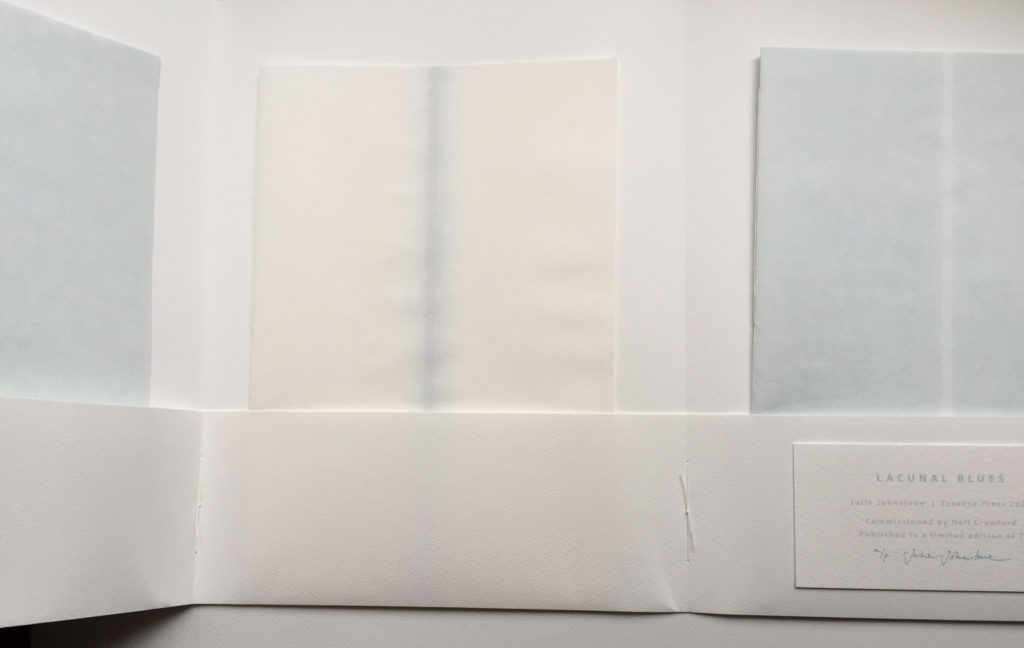
My artists’ books explore visual and spatial perception, distillation, and contemplative behaviour. I return again and again to ideas of emptiness and the barely visible, so I was immediately drawn to the word ‘lacuna’ when offered the title ‘lacunal blues’ by Neil Crawford for a commission. It brought to mind a similar concept from Japan that has always interested me – that of ‘ma’, a term that refers to negative space, to an empty space or interval that gives shape and meaning to the whole – like the pauses between notes in a piece of music, like misty expanses between mountains or trees (such as in one of my favourite screen paintings, by Hasegawa Tohaku, of pine trees). Lacuna offers another way to look at empty space – that of an omission (accidental or deliberate?), something being or becoming missing, something lost, worn away, something that has fallen away. It reminded me of the sensation when you play a piano and one of the keys fails to sound. A loss – or an interval – in time and space, in the normal expectation of things.
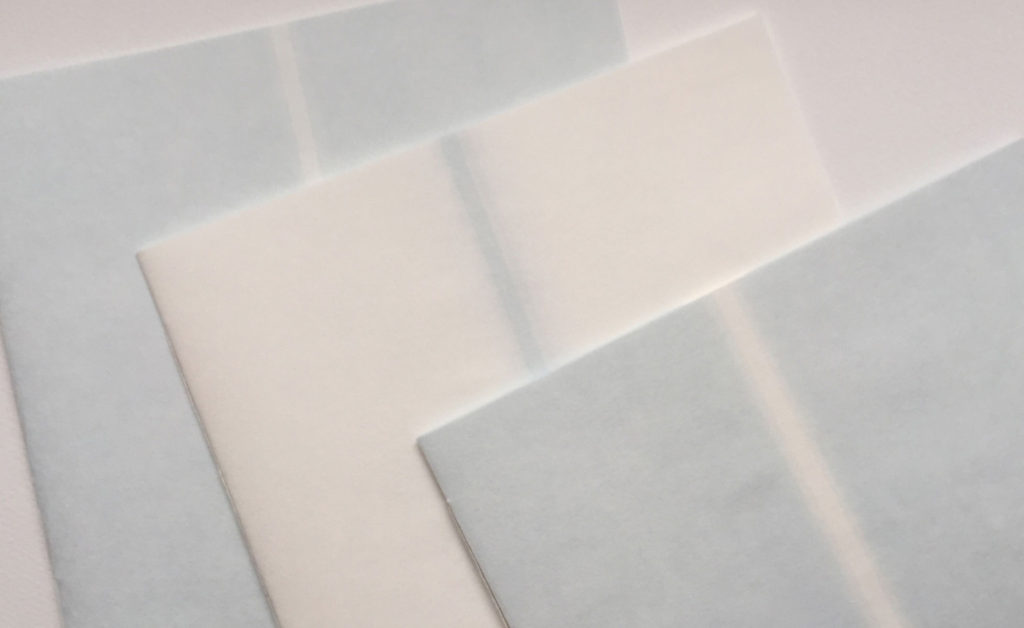
Like many of my abstract non-textual book works, Lacunal Blues uses tints of one of the four colours of the CMYK model, in this case cyan.
In the first book of this triptych work I use six tints sequentially over six pages, starting on the cover of the book: 5%, 10%, 15%, 20%, 25%, 30%. These tints of cyan fill two blocks printed on the page. These blocks gradually decrease in width. Thus the unprinted gap between them that ‘fills’ the centre of the page gradually increases in width: starting at 5mm, and widening to 10mm, 15mm, 20mm, 25mm, 30mm. Giving an illusion of condensing.
In the second book the same tints of cyan are used, in the same order, but this time each page is printed with the ‘missing’ cyan from the ‘gap’ from the first book. Each page has a thin vertical block of tint at its centre, gradually increasing in width as before.
In the third book, the two previous arrangements are brought somewhat together. The missing tint is to be found ‘fallen through’ and extending into the gap on the following page. The identity of the tints and the gaps becomes less clear.
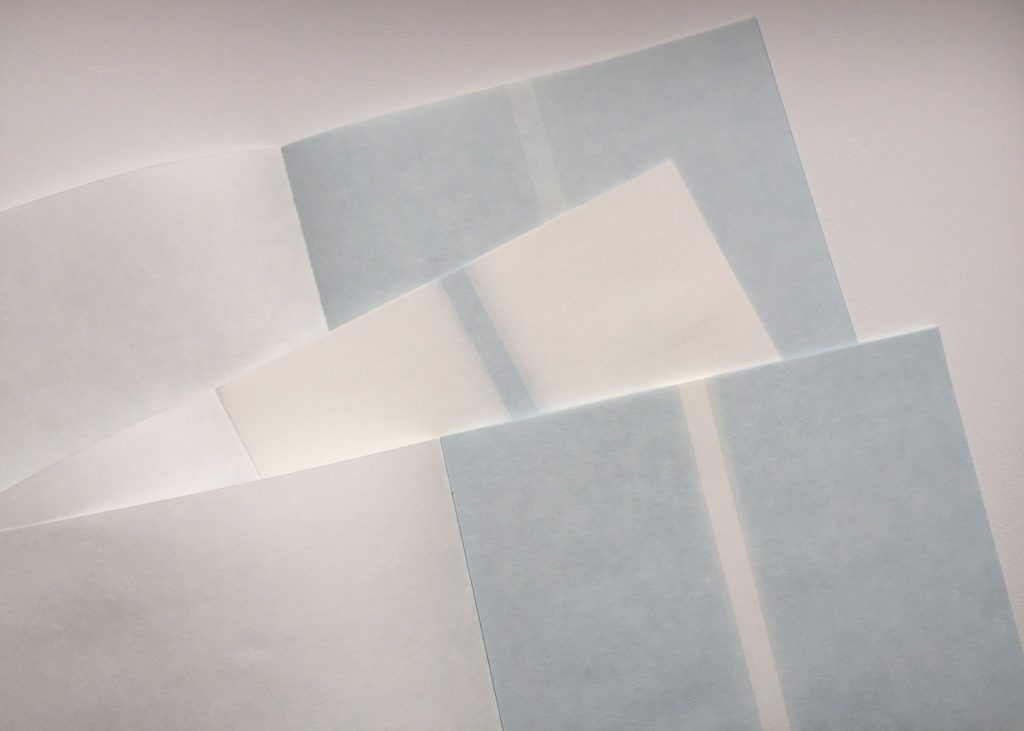
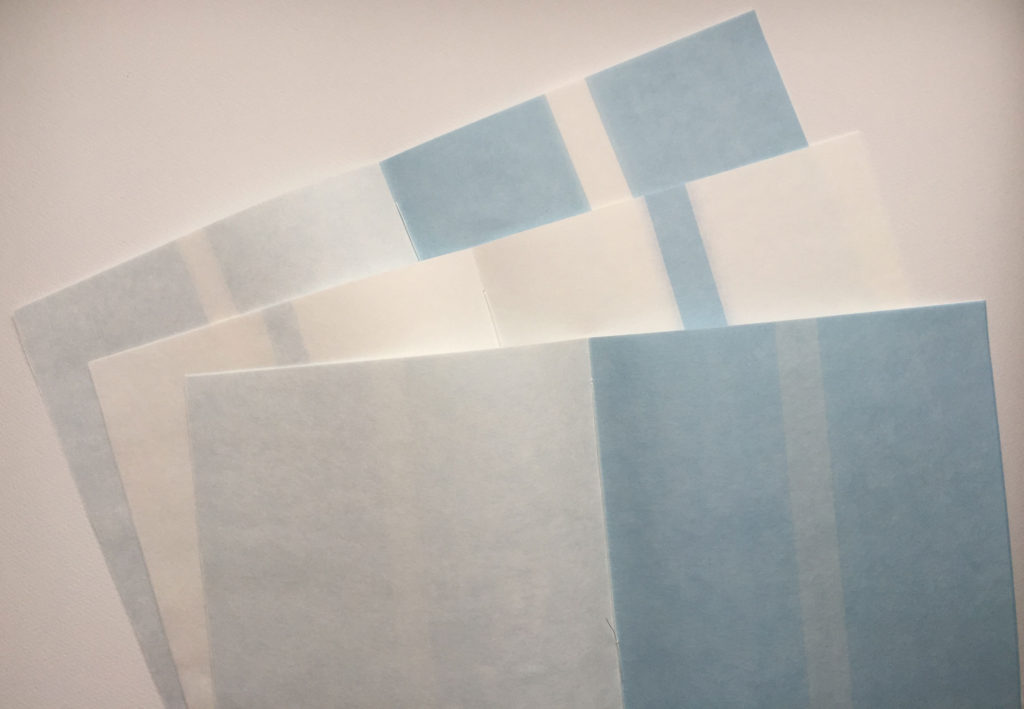
A triptych, with three ways of experiencing or reading the gaps, the lacunae. The reader can spend time with the gaps, first in their nature of being an absence, then in their being found and becoming present, and finally in their shifting into new realities. Using semi-transparent paper adds a softening visual layering to the work, playing with what might lie beyond apparent presence and absence.
